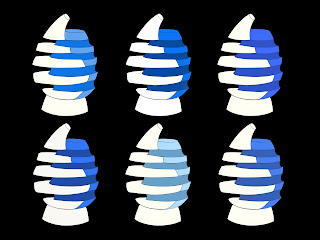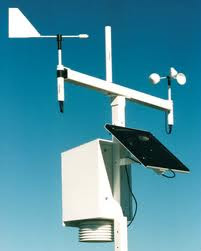Due to the fact that my device is a transport sleeping aid, relaxing colour choice is integral to the aesthetic of the product.
It is quite common knowledge that cooler colours are perceived to be more relaxing than their warmer counterparts.
For instance, Blues, greens and white are often colours that are recommended for bed sheets, as these colours can sometimes help mild insomnia cases.
However, what I didn't know before delving into some online colour research is that the colour pink also has calming abilities.
Apparently there has been extensive psychological testing using this specific colour, these tests have involved putting violent criminals
in rooms with pink walls and monitoring the subject's behaviour and mood.
Furthermore, the product colour scheme also needed to be carefully considered due to the fact that the target audience of the "Sleep-Easy" device is both male and females, young and old.
Hence, I found it important to utilise a colour scheme that represented both genders paired with a neutral shade for balance.
Whilst it is true that not all women like the colour pink, which is quite often stereotyped I felt it important to feature an equally feminine colour, especially to entice the younger female age bracket,
a group which would be fairly likely to experience difficulty sleeping during aeroplane flights for instance. I felt as though choosing the colour pink would discourage many male consumers from utilising the device which may already be perceived as "pansy" or "wimpish". Hence in order to satisfy all demographics of the target audience a compromise was made and the colour lavender was chosen for the feminine aspect of the colour scheme, a hue which contains pink in its structure.
For the masculine colour I decided to go with a light blue as research shows that blue hues are the strongest in terms of promoting relaxation and sleep, and also due to the fact that blue would compliment
the purple colour, I really wanted to avoid complimentary colours because I felt it was important to maintain a harmonious colour scheme, again to aid in creating a calming environment.
Lastly I felt it was important to choose a neutral shade to balance the colours, a third colour seemed to be necessary any way considering the many components of the device.
I avoided black because it would be too bold and would contradict the already pastel aesthetic. White was also avoided despite the fact that it is a colour often recommended for bed sheets.
I felt this shade would be detrimental to the overall design of the device due to the fact that white naturally makes things appear larger than what they are. Because the device's technical
package is quite involved the product is already bigger than most headsets. Hence, I wanted to avoid making it look larger still. Furthermore, if white was chosen, particularly for the region that comes directly in contact with the wearer's head, then the device would stain easily, due to the oils that exist in human hair - something which would be very displeasing.
Thus, after careful consideration the shade of light grey was chosen as the final component of the colour scheme. It was selected due to being close enough to white to still have calming properties, without being susceptible to staining, and farther away from black to not cause any depressive and morbid emotions which would be severely detrimental to someone with a fear of flying.
After such a careful consideration process I am happy to announce that I am content with the present colours and am confident that they support the function of the device effectively,
Ashlee Shepherd.

















































